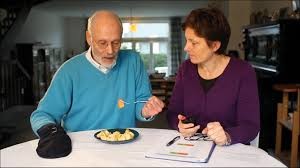Improve Hand Function After Stroke
NeuroRehab Team
Tuesday, April 26th, 2016
Arm and HandHand Function SplintsStroke Statistics

It is not uncommon for individuals to experience decreased hand function and strength following a neurological injury such as stroke. Sadly, even after 6 months following stroke, over 60% of clients are still struggling to achieve full arm and hand recovery (Kwakkel et al., 2003). Moreover, the inability to actively open the hand for pre-grasp activities is a severe limitation for many stroke survivors. The impaired movements lead to decreased independence in leisure and self-care tasks (activities of daily living). Because this limited function is a difficult challenge, traditionally, clients were required to relearn new compensatory movement patterns and one-handed strategies so functional activities could be achieved.
Let the past be the past.
The latest research shows that the brain is capable of rewiring and adapting after stroke. Therefore, arm and hand recovery is more possible than previously thought. According to the most recent scientific studies, repetitive task specific training appears to improve upper extremity function among individuals suffering from neurological injuries. Unfortunately, clients presenting with limited wrist and finger extension are unable to capitalize on the latest treatment options such as constraint induced movement therapy (CIMT). CIMT consists of restraining the less impaired upper extremity while performing intense task specific training of the involved side. Research indicates that CIMT is an effective treatment option for hemiparetic patients that exhibit some wrist and finger extension.

A majority of neurologically involved clients suffering from moderate to severe hemiparesis are unable to participate in activity-based interventions such as CIMT. The lack of finger extension for pre-grasp activities is crucial to the success of one’s recovery. Without the ability to voluntarily extend his or her digits, the prospects for a positive outcome becomes less than fruitful. This devastating fact not only is crushing to the patients and family members, but equally vexing to the health professionals that treat them.
Thankfully, to address this profound concern by millions, various manufactures have created mechanical devices and orthoses to assist clients with grasp and release activities which would traditionally be challenging at best.
Common commercially available devices are typically spring or elastic-loaded, therefore, assisting clients with finger and thumb extension. While some clinicians may choose to fit clients with high-profile hand devices if spasticity is an issue, others may choose a low-profile glove similar to the below for higher level clients.

From unthinkable to attainable.
The neurorehab landscape has surely changed for the better in the past 15 years. Who would have thought at the turn of the century that performing grasp and release activities with a severely impaired hemiparetic client (no finger extension) would be possible, or better yet, considered standard of care. We can only hope that more positive change is on the way.
To learn more about arm and hand recovery following stroke, visit our Treatment page for the latest findings and more.

